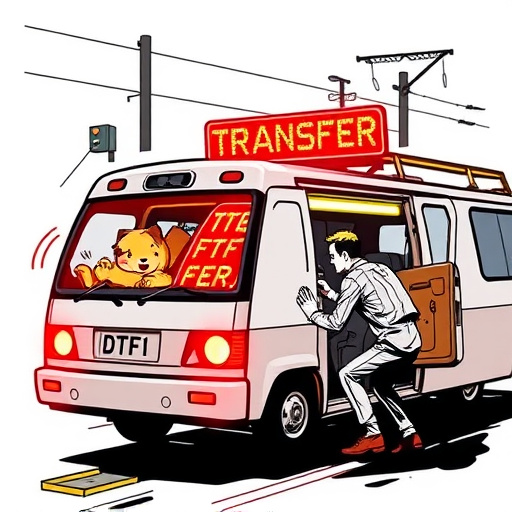Direct-to-film (DTF) printing is a cutting-edge technique for high-quality, precise transfers onto diverse surfaces like textiles and plastics. The process involves several key steps: preparing materials, applying ink using specialized tools, curing with heat or UV light, and finishing to enhance durability. DTF's popularity grows among custom designers due to its versatility for small batches and one-offs. To ensure successful DTF transfers, maintain high-resolution artwork, use the correct file format, clean equipment regularly, and follow manufacturer guidelines for curing and finishing. Regular cleaning and proper storage are vital to prevent future issues with DTF printing.
“Unleash your creativity with the art of Direct-to-Film (DTF) printing! This comprehensive guide offers a step-by-step journey through the process, from understanding the basics of DTF technology to mastering the application of transfers. Learn how to gather the essential materials and tools, prepare your design for optimal transfer, and navigate post-transfer curing. Discover tips for troubleshooting common issues, ensuring successful results. By the end, you’ll be equipped to create vibrant, durable DTF prints.”
- Understanding Direct-to-Film (DTF) Prints: A Basic Overview
- Gathering Essential Materials and Tools for the Process
- Preparing Your Design for DTF Transfer: Tips and Best Practices
- Step-by-Step Application of DTF Transfer: Detailed Instructions
- Post-Transfer Curing and Finishing Processes
- Troubleshooting Common Issues in DTF Print Applications
Understanding Direct-to-Film (DTF) Prints: A Basic Overview

Direct-to-film (DTF) printing is a cutting-edge method that allows for precise and high-quality transfers onto various materials, from textiles to plastics. Unlike traditional printing techniques, DTF involves a direct application of ink to the target surface, eliminating the need for intermediates like plates or screens. This process offers unparalleled precision, ensuring intricate designs and sharp details are preserved in the final print.
DTF prints have gained popularity due to their versatility and efficiency. They enable custom designers and manufacturers to produce personalized items swiftly, making it an excellent choice for small-batch production and one-off projects. The DTF transfer process involves several steps, including preparing the surface, applying ink, curing it with heat or UV light, and then gently peeling off the film to reveal the crisp, permanent design on the substrate.
Gathering Essential Materials and Tools for the Process

Before you begin the process of using direct-to-film (DTF) prints, it’s crucial to gather all essential materials and tools required. This includes high-quality DTF transfer film suitable for your printer, a compatible printer capable of handling the material, and a smooth, flat surface on which to apply the print. Additionally, you’ll need precision cutting tools like scissors or a craft knife, along with a transparent overlay to protect the film during application.
Make sure you have a clean workspace equipped with isopropyl alcohol and microfiber cloths for cleaning purposes, as well as clear tape for securing the film. It’s also beneficial to have a light source for precise cutting and a ruler or measuring tape to ensure accurate positioning of the print on your desired surface. With these materials and tools in hand, you’re ready to move on to the step-by-step instructions for successful DTF transfers.
Preparing Your Design for DTF Transfer: Tips and Best Practices

To prepare your design for a Direct-to-Film (DTF) transfer, start by ensuring your artwork is high-resolution and clear. Use vector graphics or high-quality raster images to maintain detail during printing. Clean up any rough edges or inconsistencies in your design, as these can affect the final print quality.
Consider the color mode; for DTF printing, CMYK is typically used. Convert your design to this mode if necessary to ensure compatibility with the printing process. Remove any background elements that are not essential to the design, as they might interfere with the transfer. Lastly, check for potential issues like overlapping objects or text that could make printing and registration difficult.
Step-by-Step Application of DTF Transfer: Detailed Instructions

DTF Transfer Application: A Comprehensive Guide
Begin by preparing your workspace. Lay out all the necessary materials, including the DTF print, your t-shirt or chosen fabric, transfer paper, and a heat press machine. Ensure your work area is clean and clear to avoid any mishaps. Next, carefully peel away the backing from the DTF print, revealing the adhesive side. Position the print on top of the transfer paper, making sure it aligns perfectly with the design you want to apply to your fabric.
Once the DTF print is secured on the transfer paper, place your fabric item face-down on a flat surface or heat press table. Press the transfer paper firmly onto the fabric, ensuring full contact. Heat up your heat press machine to the recommended temperature for your specific DTF product. Apply pressure and slowly lower the platens or press cover over the transferred design. Maintain consistent pressure for the duration of the heating process, typically a few minutes. After heating, carefully remove the transfer paper, revealing the vibrant, high-quality print on your fabric.
Post-Transfer Curing and Finishing Processes

After successfully applying a DTF (Direct-to-Film) transfer, the next step is to cure and finish the print. Curing ensures that the inks are properly set and bonded to the substrate, enhancing durability and longevity of the final product. This process involves allowing the printed material to sit for a specific duration according to the manufacturer’s instructions, often facilitated by heat or UV light exposure.
Finishing touches can include trimming excess materials, applying protective coatings for added durability, or adding special effects like laminating for a glossy finish. These steps not only enhance the visual appeal but also protect the printed design from fading or damage, ensuring your DTF transfer produces high-quality, long-lasting results.
Troubleshooting Common Issues in DTF Print Applications

Direct-to-film (DTF) printing is an exciting method for creating custom designs on a variety of materials, but it’s not without its challenges. Common issues can include poor image quality, incomplete or offset transfers, and color discrepancies. To troubleshoot these problems, start by ensuring your printer and material are compatible; check for any debris or dust on the print head and material surface before printing; and verify that your design file is in the correct format and resolution. If you’re experiencing fading or smudging, try adjusting printing settings like temperature and pressure, or consider using a higher-quality DTF transfer film. In some cases, reinstalling or updating your printer’s drivers can resolve compatibility issues. Regular cleaning of your printing equipment and proper material storage can also prevent future problems.














